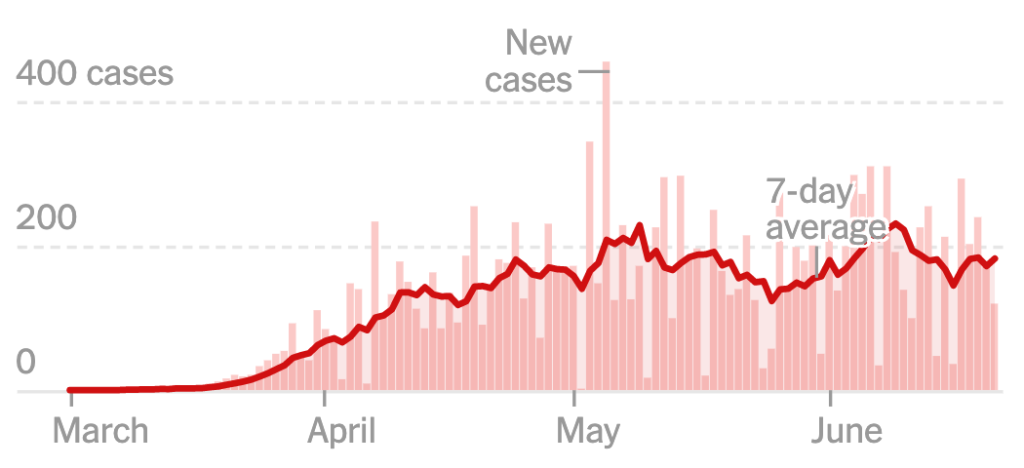Experts say we’re still in first wave of pandemic; June 25 webinar to talk pandemic, politics, BLM and the economy

Coronavirus cases in Kentucky, including confirmed and probably cases. Overall cases total 13,968, with 544 deaths. (New York Times chart. Click the image to enlarge it or click here for the interactive version.)
—–
Some pundits and news stories are talking about a “second wave” of coronavirus cases in the U.S., but scientists generally agree that we’re still in the middle of a rising first wave driven by recent increases in the South and West. Click here (or read more below) about a June 25 webinar that will discuss the second wave of the pandemic and more.
“About 120,000 Americans have died from the new virus and daily counts of new cases in the U.S. are the highest they’ve been in more than a month,” Mike Stobbe reports for The Associated Press. “Clearly there was an initial infection peak in April as cases exploded in New York City. After schools and businesses were closed across the country, the rate of new cases dropped somewhat.” But that was more of a plateau, not a drop in cases, according to Johns Hopkins University disease researcher Caitlin Rivers.
“Some worry a large wave of coronavirus might occur this fall or winter — after schools reopen, the weather turns colder and less humid, and people huddle inside more. That would follow seasonal patterns seen with flu and other respiratory viruses. And such a fall wave could be very bad, given that there’s no vaccine or experts think most Americans haven’t had the virus,” Stobbe reports. “But the new coronavirus so far has been spreading more episodically and sporadically than flu, and it may not follow the same playbook.”
“The greatest risk to our economic recovery was that a second wave of coronavirus would hit us in the fall, forcing states to shut down a second time to contain it. That is no longer a risk, because a second wave is out of the question. The first wave never ended . . . due to the premature openings in states like Florida, Texas, Arizona and the Carolinas,” Fuller reports. “This surely won’t stop the younger crowd from crowding into bars and restaurants or partying on the beaches, but it will force the older crowd to curtail their activities, and they are the ones with the money. For an economy that is 70% dependent on consumer spending, that is a death knell.”